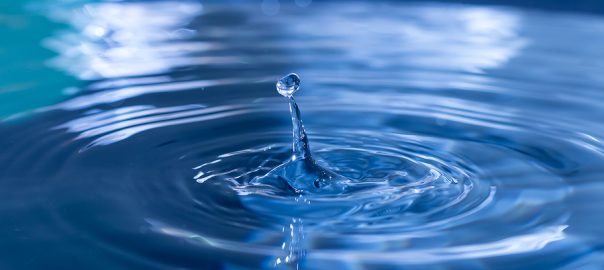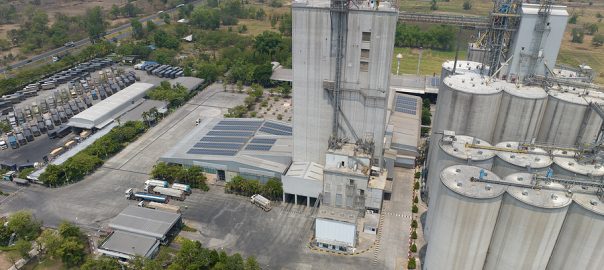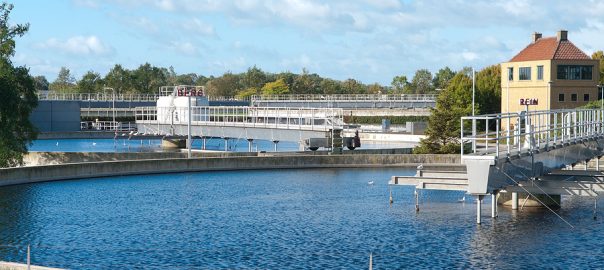
A wastewater clarifier is an important component in removing solids to start separating them from the water. It’s an important step when it comes to the first steps in removing sludge. The sludge goes to incinerators or landfills, while the liquids proceed to the next steps in wastewater treatment.
When wastewater comes into your facility, primary clarification is the first step. Suspended solids and FOG (Fats, Oils, and Grease) rise to the top of the water while sludge sinks. Those solids and sludge both need to be removed. Primary clarification usually removes around 60% of suspended solids, but this success rate depends on how effective your clarifier is.
Consider These Points When Choosing a Clarifier
How do you know which clarifier is right for your needs? It comes down to the wastewater you treat. If your plant takes a large percentage of hauled septage, you might have more solids than from a small town with a sewer. In a large city, you might end up with a lot of trash or dead animals that end up in the sewers. All of this is important to consider.
- Flow Rate: How much wastewater comes into your plant each day? A city with 50,000 residents is going to have much slower flow rates than a city with a large industrial area and millions of residents. Your clarifier has to be able to handle the flow rate you experience.
- Solids Loading: Solids loading is defined as the percentage of suspended solids in your wastewater.
- Sludge Characteristics: Sludge is a mix of solids, organic and inorganic materials, and liquids that sink to the bottom of chambers in the wastewater treatment process. If you have thicker sludge, one clarifier might work better than another option.
- Budget: Your budget is important when choosing a clarifier. If you can’t afford the equipment without drastically increasing your municipality’s rates, it’s going to be a tough sell to the people in your community. You have to stick to the budget you have and avoid going too much over it.
- Available Space: What space do you have available? Make sure the equipment you want to purchase will fit the space. Otherwise, you may need to expand or figure out another option.
- Maintenance Needs: Do you have a full-time maintenance crew devoted to going from one part of your facility to the next? If they are already struggling to keep up, a high-maintenance machine is going to add to their problems. You need to make sure the equipment is easy to maintain and won’t require additional staffing if there’s no budget or time to train new workers.
What Are the Different Types of Clarifiers?
Every wastewater treatment equipment and process solutions specialist has preferred clarification equipment. These are the options that are out there.
- Dissolved Air Floatation Clarifiers: Dissolved air floatation (DAF) or Lamella clarifiers use air to remove suspended matter from the surface of treated wastewater. It’s best for wastewater that has a high level of FOG and suspended solids.
- Membrane Filtration: Membrane filtration, such as ultrafiltration clarifiers rely on hydrostatic pressure to push wastewater liquid against a semi-permeable membrane. That membrane collects the suspended solids.
- Sludge Blanket Clarifiers: Sludge blanket clarifiers work by having water flow upward through a sludge blanket that traps the sludge and pushes the clarified water to the top of the tank.
- Rectangular or Circular Clarifiers: This is an important decision when it comes to space. This has less to do with the function of the clarifier than it does with the shape and size. Rectangular clarifiers are smaller and take less space, often no more than 10 feet in length and no more than 20 feet deep. Circular clarifiers are larger and handle more liquids. Expect circular clarifiers to range in size from 10 to 300 feet upwards of 16 feet deep.
Work With an Expert in Wastewater Treatment to Get the Best Clarifier
Lakeside Equipment has been helping cities and towns have cleaner water for close to 100 years. We offer three clarifiers that are certain to do everything you need and even better than you might imagine. They’re essential components for cleaning industrial wastewater, potable water treatment, and wastewater treatment.
Full-Surface Skimming:
Full-surface skimming is a peripheral-feed system where floating materials are caught in the clarifier’s outer skirt and main settling area. This is an effective way to remove scum and floating materials, but it may not do as much as sludge that sinks. The ducking skimmer is a good choice for low-budget wastewater facilities.
There are two types of full-surface skimmers to help with clarifying: a Full-Surface Ducking System or a Motorized Full-Surface Skimmer.
The Full-Surface Ducking System is affordable and uses scraper arms to remove floating materials to a scum trough. A Motorized Full-Surface Skimmer covers the entire width of the clarifier surface and uses a motor to rotate the arm while pushing floating materials to a rotating scum trough.
Spiraflo Clarifier:
The Spiraflo is a peripheral feed clarifier used to remove suspended solids in a primary, secondary, or tertiary clarification system. Wastewater enters the outer ring where it travels in a ring formed by an outer wall and skirt. The spiral flow travels towards a settling area where clarified water is forced upward to a weir while solids remain in a sludge blanket.
Key benefit: Tests prove that peripheral-feed spiral clarifiers perform 2x to 4x better than center-feed clarifiers.
Spiravac Clarifier:
The Spiravac is a peripheral feed clarifier for the best possible solids removal through the use of suction to rapidly return active sludge to the beginning of the process. Wastewater enters a channel formed by an outer wall and skirt. Sludge is directed to the center of the tank where it is removed using suction and sludge removal pipes or a rotating manifold located in the center. While this happens, the clarified water rises and goes into a weir to go to the next steps in wastewater treatment.
Key Benefits: Workers can control the flow of sludge that’s been removed, and the process takes place faster than with other clarifiers.
Which is best for your needs? It depends on your current system’s design and footprint. If you’re short on space, you may need a system that fits a smaller area. Work with Lakeside Equipment to figure out the best clarifier for your wastewater treatment plant.
Our team of salespeople and engineers work with you to ensure your water treatment system does everything you want in the most affordable way possible. After your system is installed our parts and service team are there to help you keep your system working perfectly through the years. Reach out to us to learn more about our clarifiers and how they’ll help you get cleaner water.






